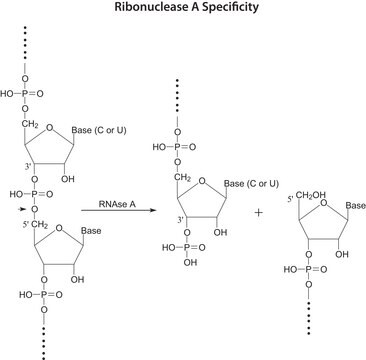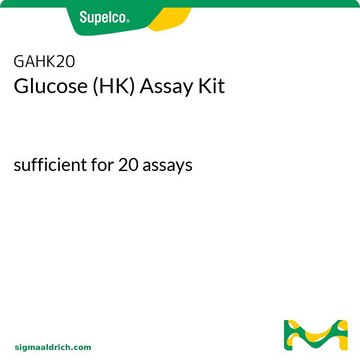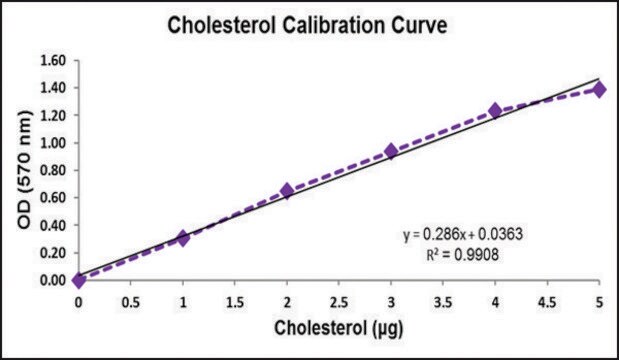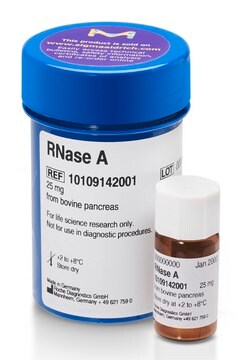SML0172
Cercosporamide from Cercosporidium henningsii
≥98% (HPLC)
Synonym(s):
4-Dibenzofurancarboxamide
Sign Into View Organizational & Contract Pricing
All Photos(1)
About This Item
Empirical Formula (Hill Notation):
C16H13NO7
CAS Number:
Molecular Weight:
331.28
UNSPSC Code:
12352200
NACRES:
NA.77
Recommended Products
Quality Level
Assay
≥98% (HPLC)
solubility
chloroform: 1 mg/mL
ethyl acetate: 1 mg/mL
DMSO: 5 mg/mL (Solution in DMSO is unstable and thus should be freshly prepared.)
storage temp.
−20°C
InChI
1S/C16H13NO7/c1-5(18)10-7(20)4-9-16(2,14(10)22)12-8(21)3-6(19)11(15(17)23)13(12)24-9/h3-4,19-21H,1-2H3,(H2,17,23)/t16-/m1/s1
InChI key
GEWLYFZWVLXQME-MRXNPFEDSA-N
Application
Cercosporamide from Cercosporidium henningsii has been used as a mitogen-activated protein (MAP) kinase-interacting kinase (MNK) inhibitor in glioblastoma (GBM)-derived BS287 spheres. It has also been used as an inhibitor of bone morphogenetic protein receptor (BMPR) type I kinase in HepG2 cells and zebrafish embryos in particular to test its rescue potential against developmental defects.
Biochem/physiol Actions
Cercosporamide was initially identified as a phytotoxin with broad-spectrum anti-fungal activity. Studies have shown that cercosporamide is a specific, highly potent fungal inhibitor of the cell wall integrity-signaling pathway mediator, protein kinase (Pkc1) inhibitor. Semisynthetic cercosporamide analogues demonstrated hypoglycemic activity and therefore, serve as candidates for potential new anti diabetic drugs. Cercosporamide was found to block eIF4E (Eukaryotic Initiation Factor) phosphorylation in cultured cancer cells, inducing apoptosis, suppressing proliferation, and reducing soft agar colonization. Its eIF4E phosphorylation inhibitory effect was also shown when administrated orally on xenograft human tissue and mouse liver tissue. Cercosporamide is a potent and selective Mnk inhibitor. It reduces tumor growth in xenografted HCT116 tumor and suppresses the outgrowth of B16 melanoma lung metastases. Hence, blocking Mnk function and eIF4E phosphorylation may be an attractive anticancer strategy.
Preparation Note
DMSO solution (1 mg/ml), kept at -20 °C, is stable for at least three months.
Choose from one of the most recent versions:
Already Own This Product?
Find documentation for the products that you have recently purchased in the Document Library.
Z Hong et al.
Molecular and cellular biology, 14(2), 1017-1025 (1994-02-01)
k9 killer toxin from Hansenula mrakii was used to select a number of resistant mutants from Saccharomyces cerevisiae. Preliminary biochemical and genetic studies showed that some of them acquired structural defects in the cell wall. One of these mutants, the
Jessica K Altman et al.
Blood, 121(18), 3675-3681 (2013-03-20)
Mnk kinases regulate the phosphorylation and activation of the eukaryotic initiation factor 4E (eIF4E), a protein that plays key roles in the initiation of messenger RNA translation and whose activity is critical for various cellular functions. eIF4E is deregulated in
Akihiro Furukawa et al.
European journal of medicinal chemistry, 54, 522-533 (2012-06-26)
Selective peroxisome proliferator-activated receptor gamma (PPARγ) modulators are expected to be a novel class of drugs improving plasma glucose levels without PPARγ-related adverse effects. As a continuation of our studies for (-)-Cercosporamide derivatives as selective PPARγ modulators, we synthesized substituted
Maya P Singh et al.
Journal of industrial microbiology & biotechnology, 37(4), 335-340 (2009-12-25)
Fungi are well known for their vast diversity of secondary metabolites that include many life-saving drugs and highly toxic mycotoxins. In general, fungal cultures producing such metabolites are immune to their toxic effects. However, some are known to produce self-toxic
Akihiro Furukawa et al.
Bioorganic & medicinal chemistry letters, 22(3), 1348-1351 (2012-01-10)
Peroxisome proliferator-activated receptor gamma (PPARγ) is a potential drug target for treating type 2 diabetes. The selective PPARγ modulators (SPPARMs), which partially activate the PPARγ transcriptional activity, are considered to improve the plasma glucose level with attenuated PPARγ related adverse
Our team of scientists has experience in all areas of research including Life Science, Material Science, Chemical Synthesis, Chromatography, Analytical and many others.
Contact Technical Service





